PUSH Elevensix Review: The Coil Shock for Enduro Bikes
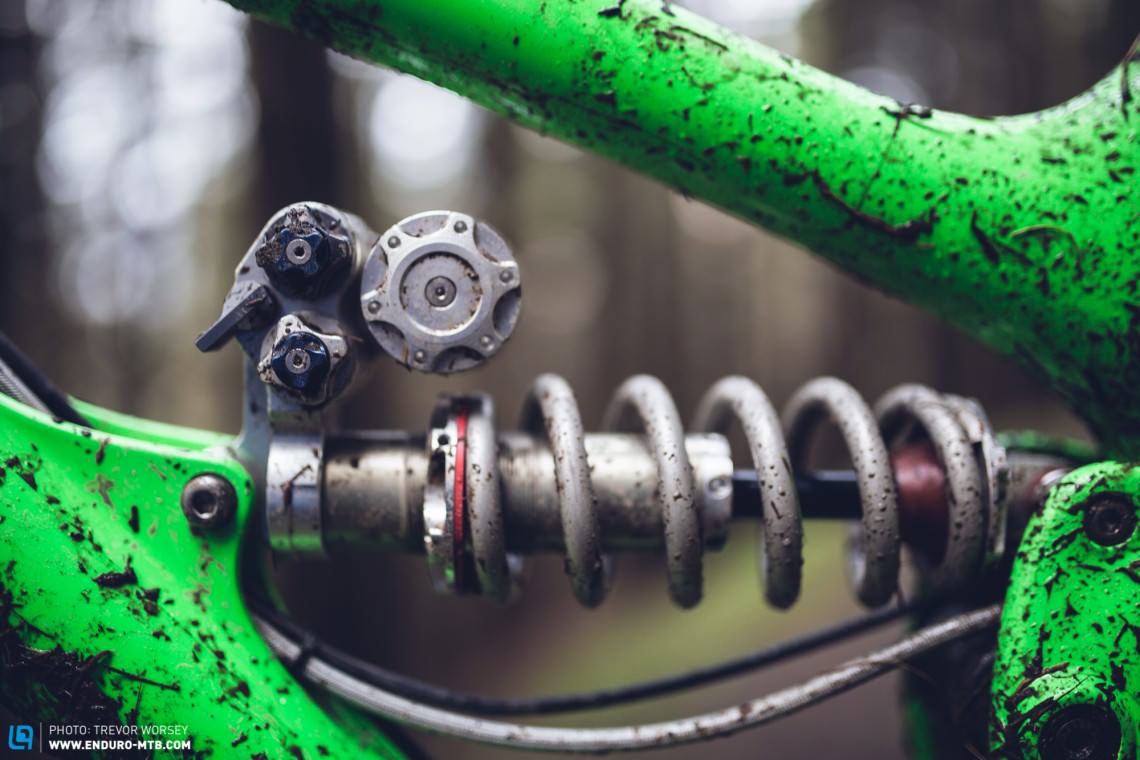
Until very recently the pursuit of weight saving meant that air shocks became the king of the trail and enduro sector, and coil shocks fell out of favour. Now with the latest generation of 160 mm bikes now regularly weighing in under 13 kg we are seeing a resurgence of coil shocks as riders are happy to compromise a little in weight to enjoy the increased downhill performance. There is one shock that everyone has been talking about, and we have been testing it for the last 9 months, it’s time to check out the PUSH ELEVENSIX.
The 875 g PUSH ELEVENSIX caused a stir when it was released, handbuilt for each rider and frame with a Dual Overhead Valve Design, allowing two completely decoupled ride characteristics that can be toggled between on-the-fly with a lever. We received a beautifully packaged PUSH ELEVENSIX from UK distributors TF Tuned back in May 2015 promising to be an out-of-the-box solution for those looking for maximum performance; custom built for our long term SB6c.
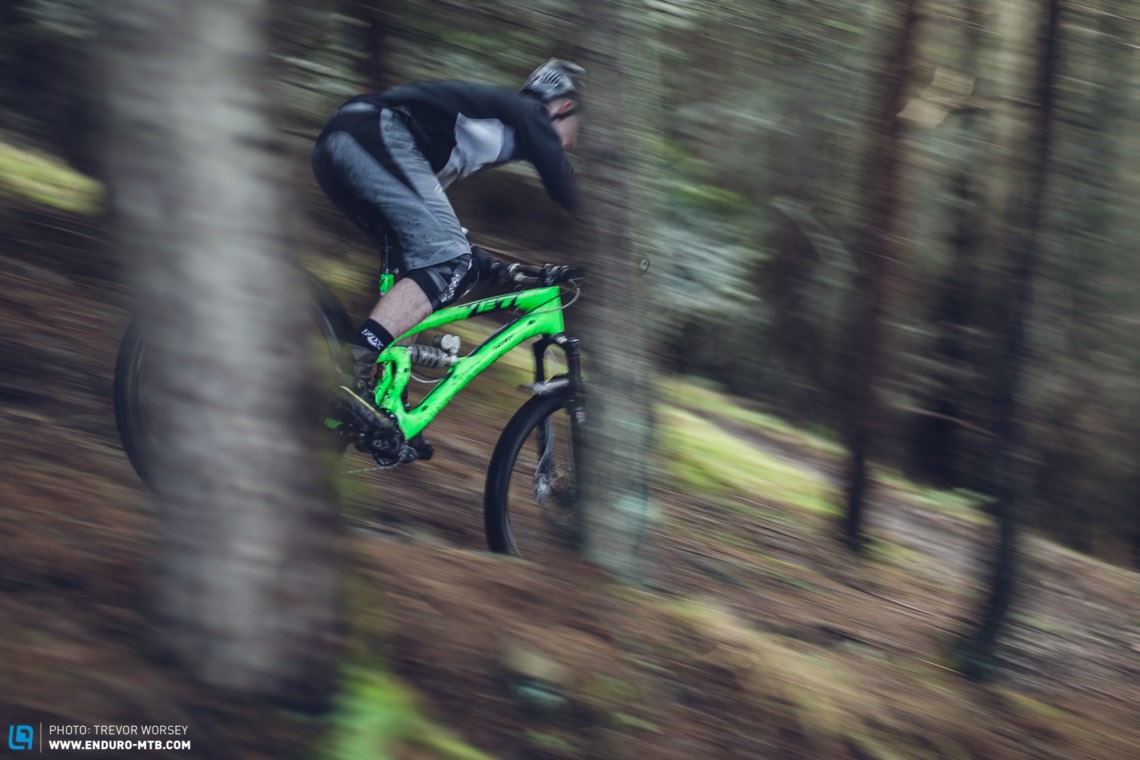
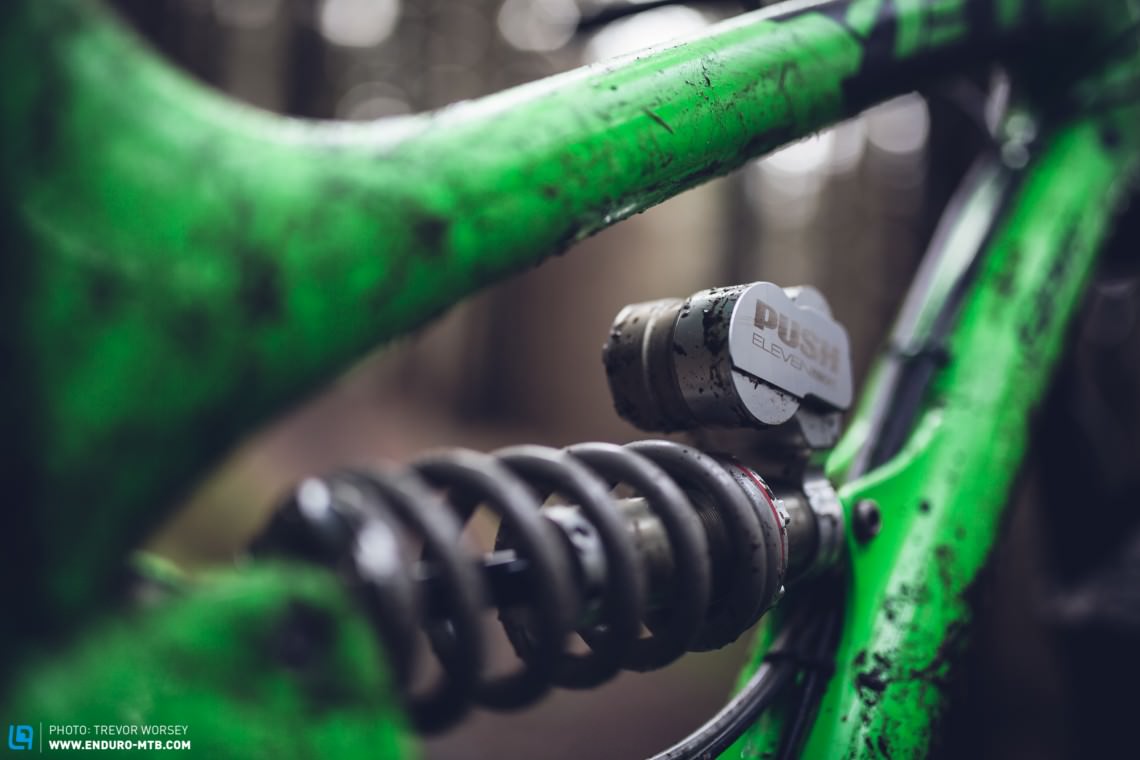
A shock costing 1,200 $ should be nothing short of perfection and we sure put it through the wringer. It was extensively ridden by our test team and thrashed by elite EWS racers through a hard winter and we now have a very good understanding of the industrial looking unit. For full details of the shock and how it works, you can check out our first look.
What makes the ELEVENSIX unique is that it’s valued internally to suit the leverage curve of the bike, and the list of compatible bikes is growing every day. If you want to take your shock to a new frame, PUSH recommends getting the shock reconfigured to suit the new application. With a recommended service interval of 100 hours, we have currently run ours to almost three times that and the shock is still smooth and consistent, so it’s certainly not high-maintenance. The shock runs on standard FOX or Rockshox 12.7 mm hardware with an eyelet O/D of 15 mm but uses PUSH’s super low friction red bushes.

The PUSH ELEVENSIX does not look like any other shock on the market, with its hard edges, burly dials and industrial styling it’s certainly a conversation starter. Standing in stark contrast to the supermodel curves of the Yeti SB6c the aesthetics polarised opinion, but all valued the large adjustment dials and burly switch lever that looks ready to take the knocks.
Setting up the PUSH ELEVENSIX
Setup could not have been easier with the PUSH ELEVENSIX as it already comes setup for the rider. The shock comes with a printed card with reference settings customised for the rider and the name of the technician who put it all together. We simply dropped out the old shock and fitted the new one and hit the trails. With a quick tweak of pre-load the steel HyperCo Ultra Light 375 lb spring gave us a sag bang on 30% on the SB6c and the initial sensitivity was simply ridiculously good.
Riding the Push ELEVENSIX
So how did it ride? Very well! Fitting the ELEVENSIX resulted in an immediate and observable increase in performance on the trail. After a run-in period on the factory settings we experimented with different setups for the two decoupled circuits, wet and dry trails, high speed or slow and technical, but, in the end, found that the suggested settings from Push were the most functional as a climb – descend setup. For small adjustments, the compression dials and rebound control showed a significant impact on the damping and we liked the positive clicks. On the trails the bike felt to be sitting higher in its travel with less wallow, but responded sublimely to impacts, never giving out too much or too little and hugging the trail with a buttery smoothness and silence that was clearly audible (or not as the case may be).
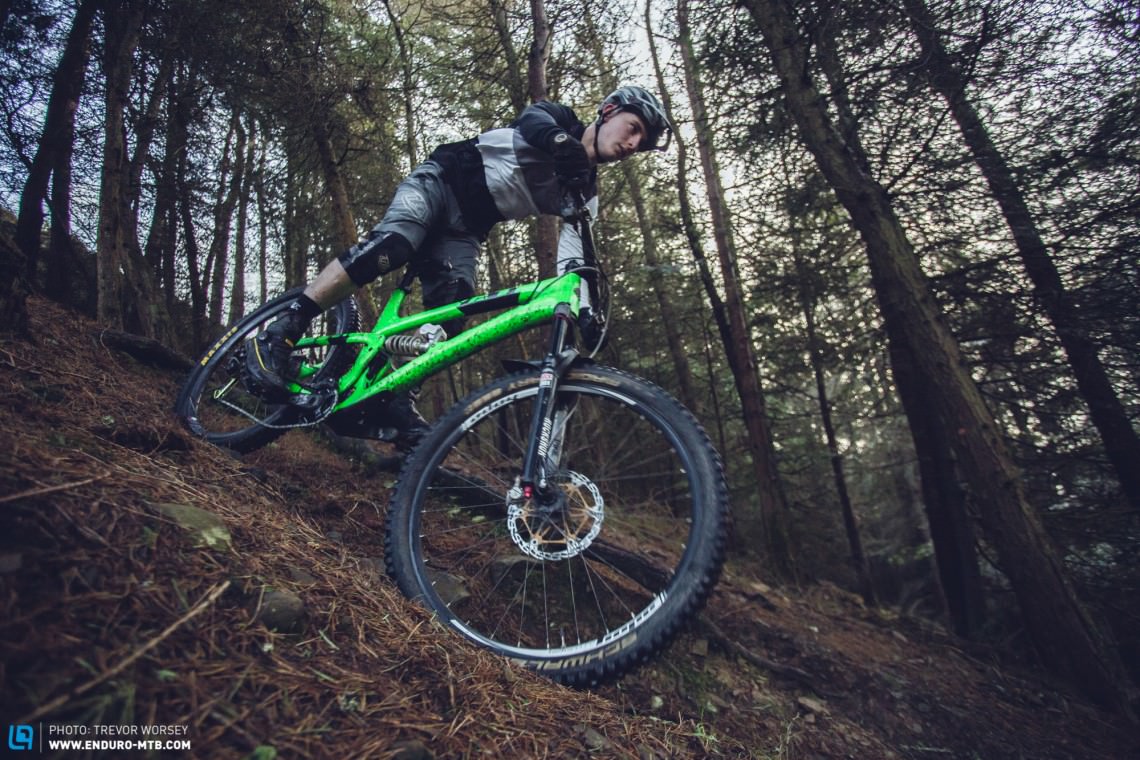
Through big rock gardens, there was a new lightness and agility, allowing direction changes while everything was going wild. The SB6c glided smoothly over the top rather than hanging up and the rear end seemed to be exceptionally free to follow the ground. Where the improved balance and traction was most obvious was in the corners, where after a very short amount of time our testers were carrying far more speed in and out of turns and a number of unexpected STRAVA times were smashed. The grip is tenacious, rather than skipping out of traction the rear end bites and holds through rough chatter and bumps while never losing feedback at the limit. Repeated hard uplifted runs did not phase the damping, or result in any spikes or cavitation.
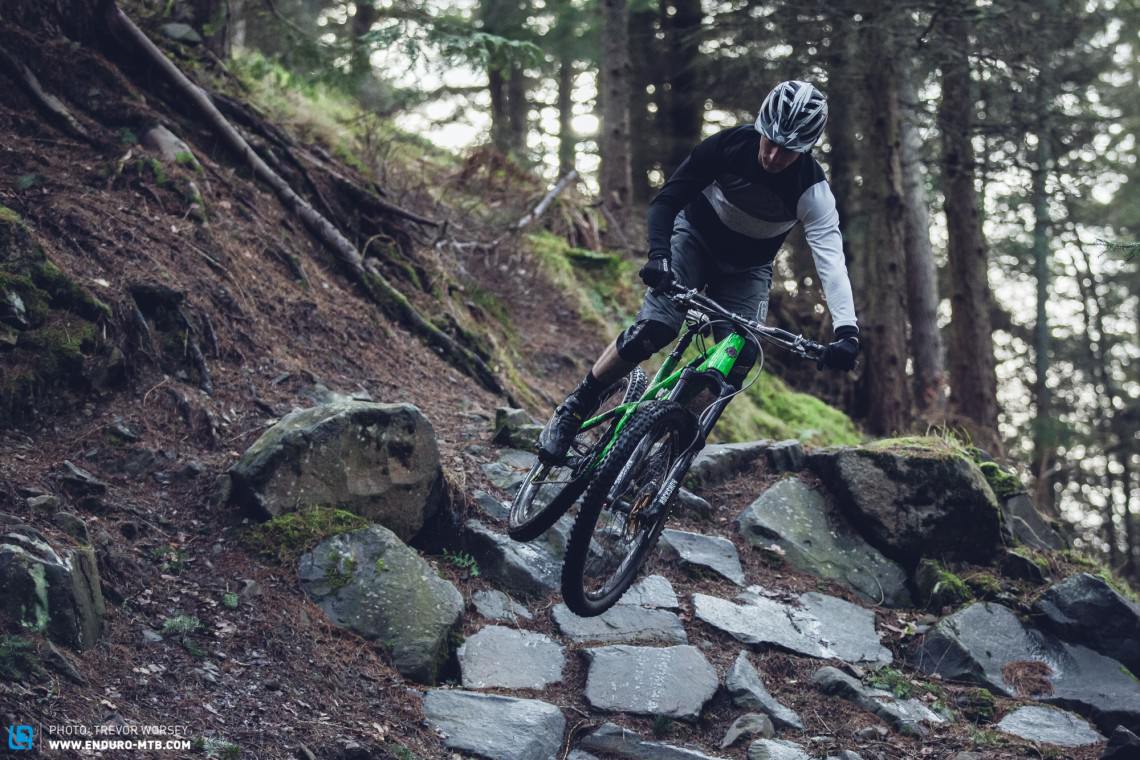
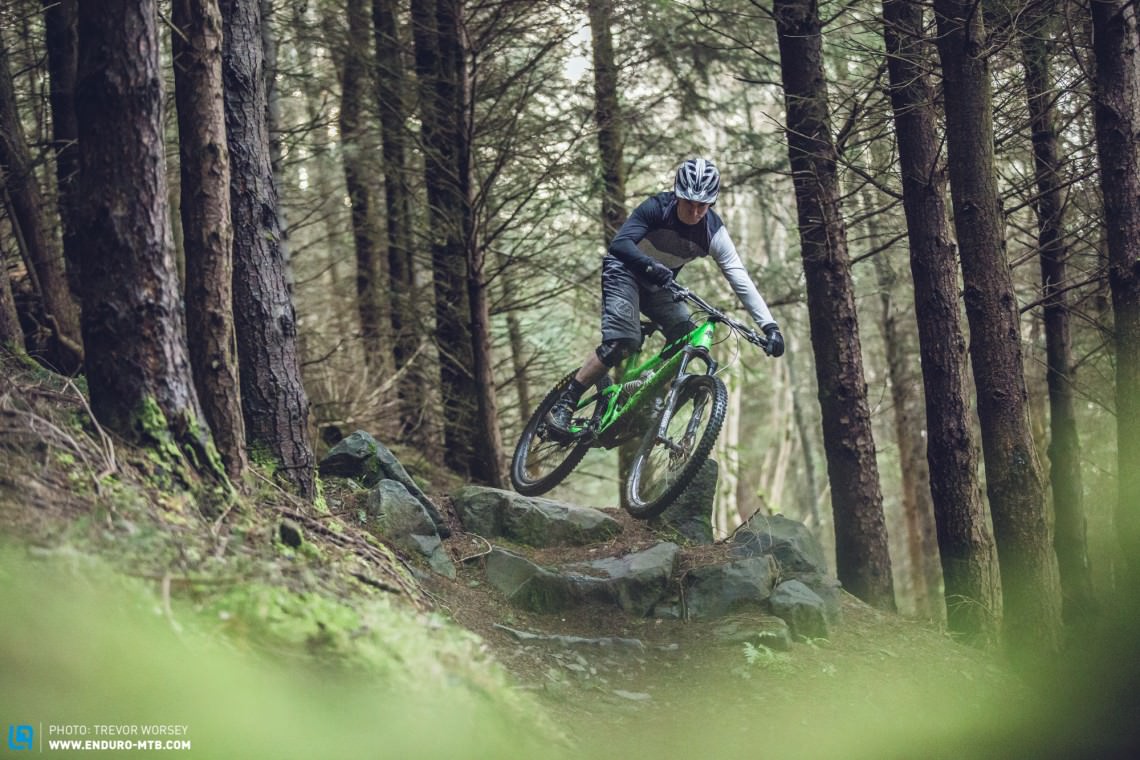
When pedalling up the hill, switching to the climb circuit engages a heavier low-speed compression damping and eliminates any trace of pedal bob. The initial part of the stroke is still smooth and sensitive allowing the rear wheel to follow the ground and develop huge amounts of traction on punchy technical climbs. In fact, that is where we were most surprised, on the climbs, where the low stiction and free initial shock movement results in far more grip than possible with an air shock. Aside from the 400 g increase in weight, the ELEVENSIX shock was a better climber than the air shock it replaced.
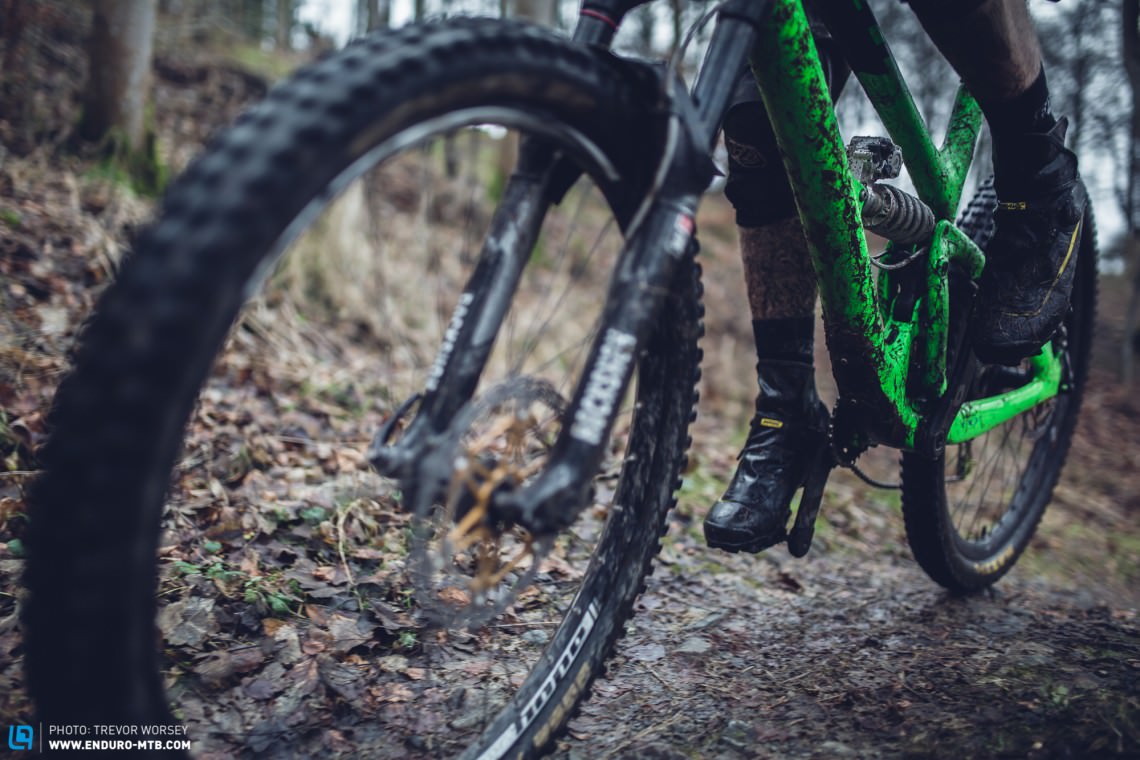
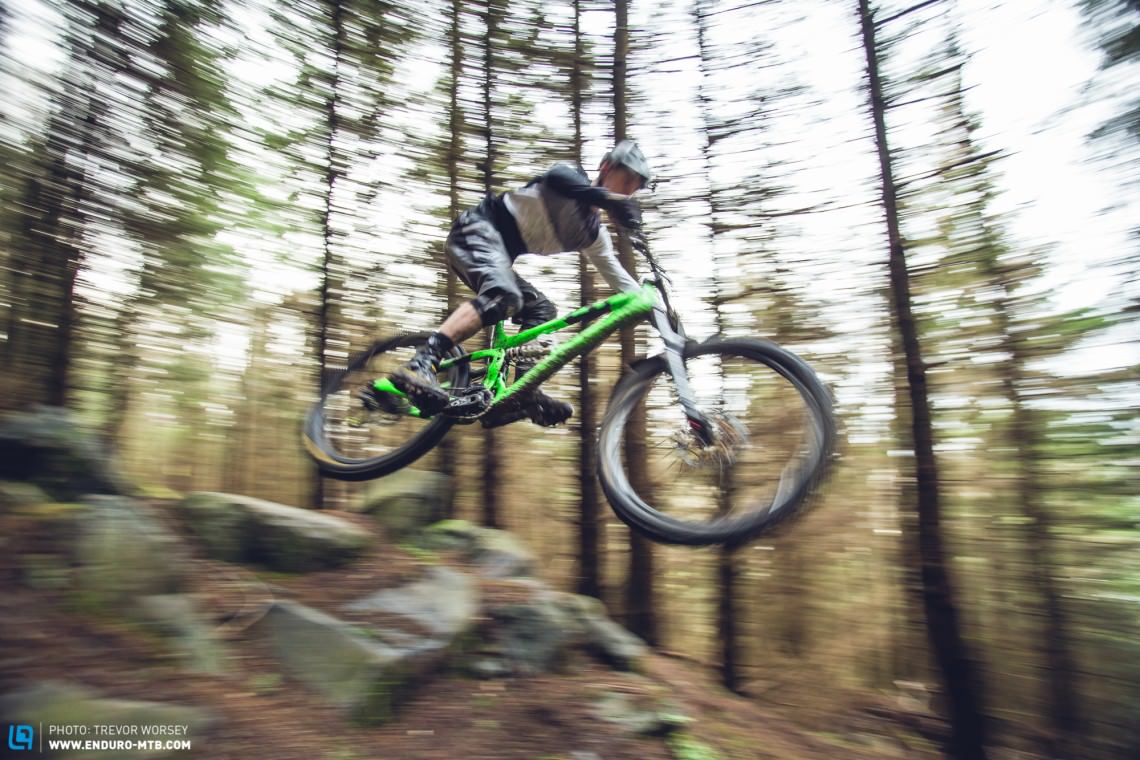
Although we were very impressed with the ELEVENSIX it was only when changing back to the freshly serviced air shock did the true performance benefits reveal themselves! Although still an impressive performer the bike felt less connected to the ground, running lower in its travel and making more of a fuss over repeated impacts. Big square edged hits were jarring and lacking the smooth floaty feeling of the ELEVENSIX, and the noise from the rear end increased audibly.
Is the ELEVENSIX worth it?
So let’s talk about the elephant in the room because it’s a big one. Retailing for $1,200 the ELEVENSIX is certainly not cheap, but in this age of four figure carbon wheels and five figure bikes, compared to some boutique upgrades the ELEVENSIX offers a lot of actual bang for your buck. While some of the impressive benefits we observed will be seen in more affordable coil shocks from other manufacturers; what you are buying with the premium of the ELEVENSIX is the versatility of the switchable decoupled circuits, excellent climbing characteristics and the knowledge that the shock has been expertly optimised for both your bike suspension curve and weight – offering an out-of-the-box, fit, forget and shred solution for those looking for the ultimate in performance.
More information on the ELEVENSIX on the PUSH-Website.
Words and photos: Trev Worsey
Did you enjoy this article? If so, we would be stoked if you decide to support us with a monthly contribution. By becoming a supporter of ENDURO, you will help secure a sustainable future for high-quality mountain bike journalism. Click here to learn more.








